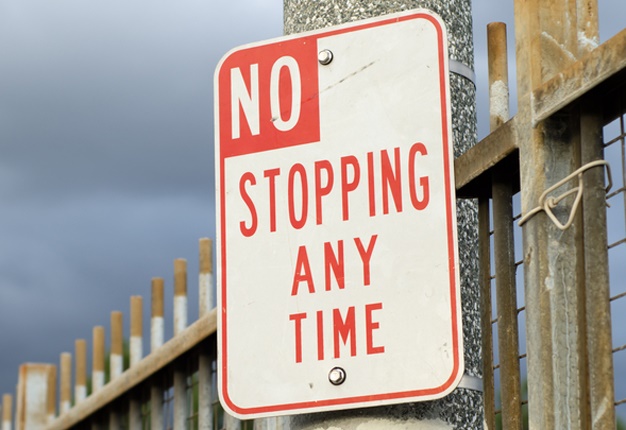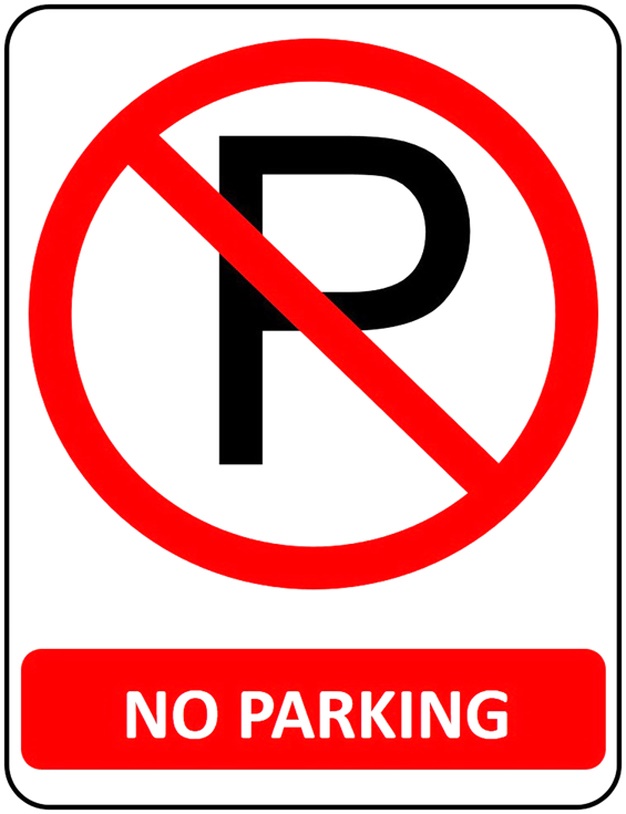
Cape Town - With thousands of vehicles cramming city streets, parking is a premium for South African motorists.
Though there are designated areas for parking, some allow drivers to stop (presumably to pick up passengers) but not leave their vehicles unattended.
It might sound simple but not knowing the difference between the two can lead to a hefty traffic fine. What's even more alarming is the fact that at times authorities are unaware of the difference, even if motorists are.
Wheels24 approached the Justice Project SA (JPSA) and Arrive Alive for comments:
Wheels24: What is the difference between stopping and parking your vehicle?
JPSA: Stopping means just what it says - bringing your vehicle to a halt with the engine running [at the side of the road]. Parking means stopping your vehicle, switching it off, alighting from it and walking away.
READ: 'Beware: Robots at work' - 5 future road signs
Do you have any questions/comments regarding stopping or parking your vehicle in SA? Email us or get in touch via Facebook and Twitter.
W24: Why is it a problem if road users park near a 'No Stopping' sign and vice versa?
JPSA: Stopping and/or parking is typically prohibited where the presence of a stationary vehicle will impede the flow of traffic. It is a problem if it is prohibited by a road traffic sign or road marking.
Arrive Alive: Drivers (read: taxis) who stop in a no stopping area reduces the road capacity, resulting in lane blockages and obstructions.
No parking is generally in an area that is not used for traffic, but needs to be kept clear for an exit, fire hydrant, street corner, etc. Ignoring a no stopping instruction causes obstructions that could lead to someone driving into a stationary vehicle.
W24: What does the law say?
JPSA: The law says you may not stop and/or park where it is prohibited by a road traffic sign or marking. It also says that you may not park facing oncoming traffic. Funnily enough, these questions are typically asked as part of the K53 learner’s test, too.
GALLERY: SA's funny road signs
W24: How does the law protect you if you are wrongfully accused/fined by a law enforcer?
JPSA: A law enforcer may only cite (fine or prosecute) you if you have contravened one or more of the provisions of legislation. Anything outside of the legislative framework is NOT an offence.
Arrive Alive: With cellphone cameras it is easy these days to simply photograph the specific area and prove the road scenario. Remember, where it says 'no parking' a vehicle may not be left unattended at all. Making a representation or opting to appear in court are the two options available to a person who feels he/she has been wrongly charged.
Image: iStock
Do you have any questions/comments regarding stopping or parking your vehicle in SA? Email us or get in touch via Facebook and Twitter.
The law in full
The National Road Traffic Act 93 of 1996 says on:
Stopping of vehicles (Regulation 304)
Except in order to avoid an accident, or in compliance with a road traffic sign or with a direction given by a traffic officer, or for any cause beyond the control of the driver, no person shall stop a vehicle on the roadway of a public road
(a) alongside or opposite an excavation or obstruction on the public road if other traffic would be
obstructed or endangered by such stopping;
(b) within any tunnel or subway or on any bridge or within six metres of any tunnel, subway or
bridge;
(c) on, or within 6m from the beginning or end of, any part of such roadway where the normal width thereof has for any reason been constricted;
(d) in contravention of any road traffic sign;
(e) on the right-hand side of such roadway facing oncoming traffic;
(f) alongside or opposite any other vehicle on such roadway where such roadway is less than 9m wide;
(g) within the railway reserve at a level crossing;
(h) within 9m of his or her approaching side of a pedestrian crossing demarcated by appropriate road traffic signs; or
(i) in any other place where the stopping of a vehicle would or would be likely to constitute a danger or an obstruction to other traffic.
Image: iStockParking of vehicles (Regulation 305)
1 No person shall park a vehicle on a public road
(a) in contravention of any road traffic sign;
(b) in any place referred to in regulation 304;
(c) on the same side as a fire hydrant within an area bounded by the centre-line of the roadway and lines at right angles to such centre-line 1.5m on either side of the hydrant. If such hydrant is clearly visible to and recognizable as such by drivers of moving vehicles, or if it is indicated by an appropriate road traffic sign;
(d) in any place where the vehicle would obscure any road traffic sign;
(e) in such manner as to encroach upon the sidewalk, if any; or
(f) in such manner as to obstruct any private or public vehicular entrance to such road.
2 The provisions of subregulation (1)(e) shall not apply to any vehicle, other than a motor vehicle, while it is being used in carrying on the business of street vendor, pedlar or hawker, unless it exceeds such maximum weight, height, length or mass as may be prescribed in these regulations.
3 No person shall park a vehicle on any portion of the roadway (excluding the shoulders) of a public road outside an urban area or with any part of such vehicle within one metre of the edge of such roadway except in a parking place demarcated by an appropriate road traffic sign.
4 No person shall park a vehicle on the roadway of a public road within an urban area
(a) within 9m of the side from which he or she approaches a pedestrian crossing demarcated by appropriate road traffic signs, unless such parking is permitted by appropriate road traffic signs;
(b) within 5m of any intersection unless such parking is permitted by a road traffic sign;
(c) upon or over the actuating mechanism of a traffic signal;
(d) (i) with the outside of any left-hand wheel thereof more than 450mm within the roadway; or
(ii) where the public road concerned is restricted to vehicles moving in one direction and the vehicle is parked on the side of the roadway, with the outside of any right hand wheel thereof more than 450mm within the roadway, unless such parking is permitted by an appropriate road traffic sign; or
(e) which is less than 5.5m wide unless the public road concerned is restricted to vehicles moving in one direction and such parking is permitted by appropriate road traffic signs.
5 No person shall park a motor vehicle on a traffic island or in a pedestrian mall or pedestrian lane.
6 Whenever a vehicle has been parked in contravention of any provision of the Act or any by-law made under the Act, or in contravention of or in disregard of the directions of any road traffic sign or notice board as prescribed in these regulations, such vehicle may be removed or caused to be removed and impounded by a traffic officer, and unless the vehicle has been so parked in the course of a theft thereof, the owner shall bear the costs of such removal and impoundment.
7 No person other than a disabled person or a driver of a motor vehicle conveying disabled persons, which motor vehicle is issued with a sticker for conveying disabled persons shall park on a parking bay reserved for disabled persons.
Image: iStock




 Publications
Publications
 Partners
Partners














